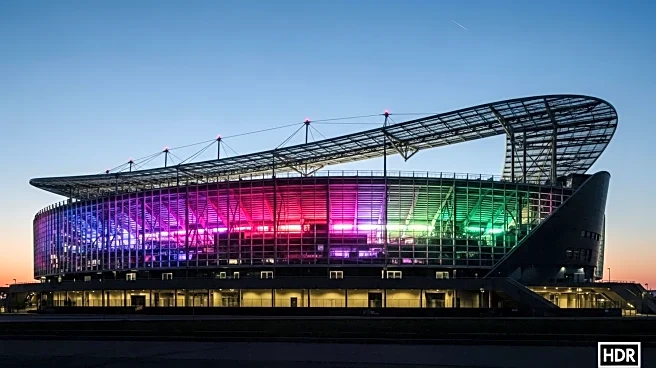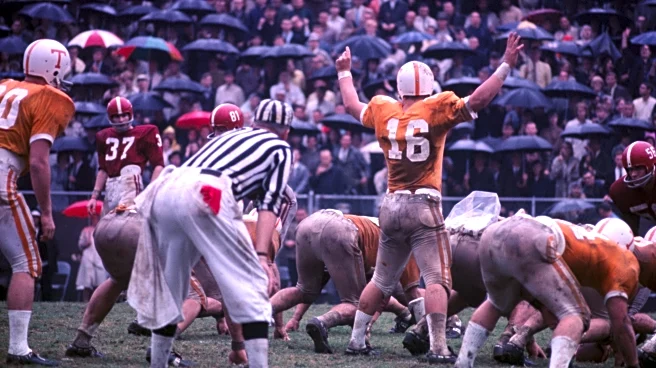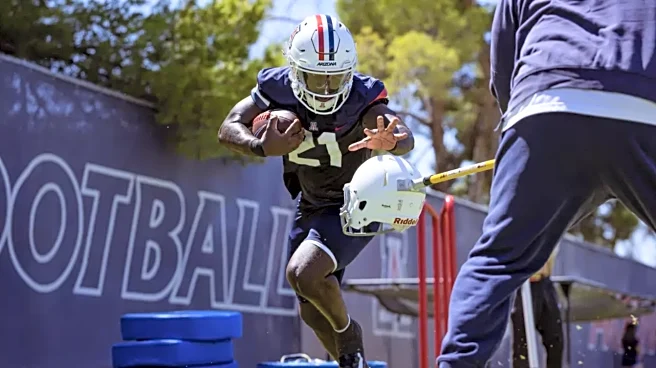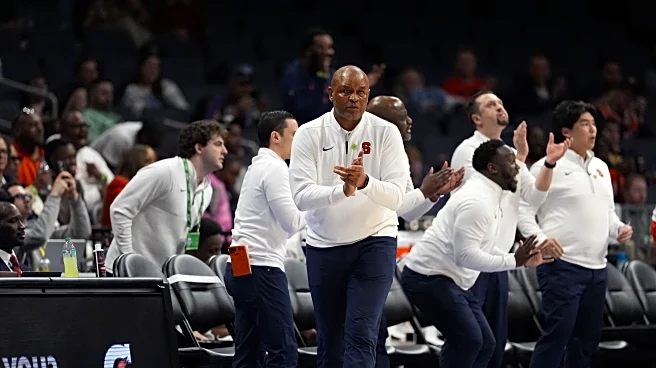What's Happening?
Texas Tech is considering innovative strategies to increase revenue from Jones AT&T Stadium. The NCAA's recent allowance for on-field sponsorships presents an opportunity, although Texas Tech has yet to secure a partner at the desired price. Athletics director Kirby Hocutt emphasized the importance of finding the right sponsorship value. Additionally, the university is contemplating stadium naming rights, with its current deal with AT&T expiring in June 2026. If AT&T does not renew, Texas Tech could seek a new naming partner, potentially generating significant financial benefits. The university is also exploring hosting major events, such as concerts, which have proven lucrative for other institutions like Texas A&M. The Matador Club has already raised $63 million since 2022, indicating strong donor support. These efforts aim to enhance the stadium's value and bolster Texas Tech's presence in the Big 12 and beyond.
Why It's Important?
The exploration of new revenue streams by Texas Tech is significant for several reasons. It reflects a broader trend among college football programs seeking financial sustainability and growth. On-field sponsorships and naming rights could provide substantial income, helping Texas Tech maintain competitiveness in the Big 12 conference. Hosting major events like concerts could diversify revenue sources, reducing reliance on traditional funding methods. This approach may set a precedent for other universities facing similar financial challenges. Successful implementation could enhance Texas Tech's national profile, attracting more fans and sponsors, and potentially influencing public policy regarding college sports funding.
What's Next?
Texas Tech will continue negotiations with potential sponsors and partners to finalize deals that align with their financial goals. The university will assess the feasibility of hosting large-scale events at Jones AT&T Stadium, considering logistical and financial implications. Stakeholders, including alumni and fans, may react positively to these initiatives, potentially increasing engagement and support. The outcome of these efforts could influence other universities' strategies in maximizing stadium revenue, prompting broader discussions on the commercialization of college sports venues.













